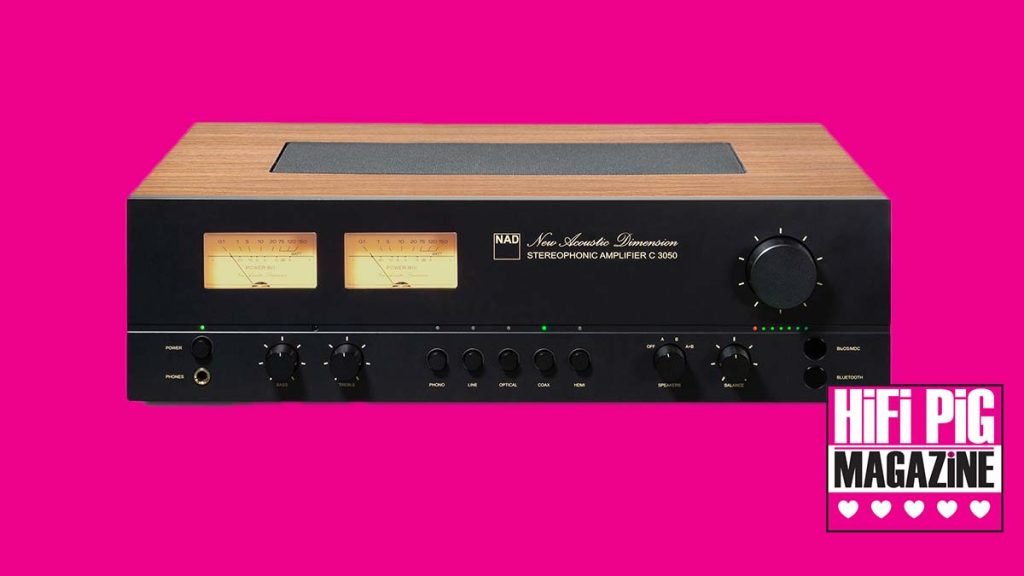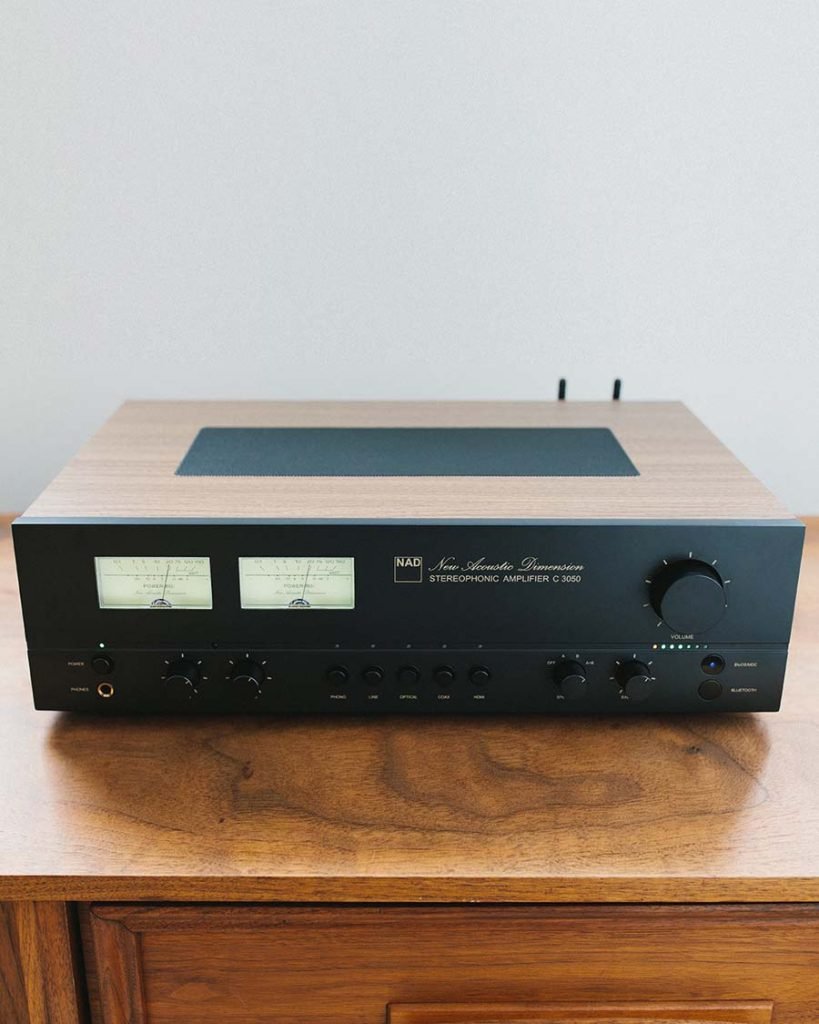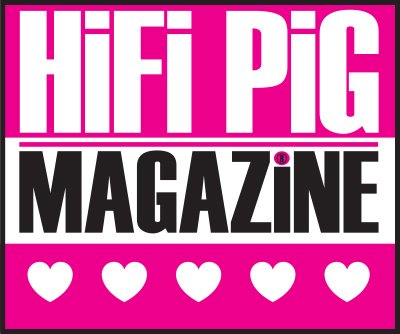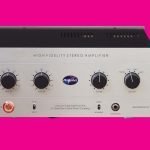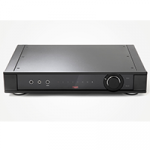NAD C 3050 AMPLIFIER REVIEW
NAD Amplifiers have been well-known and well-loved for many years by audiophiles at every stage of their involvement in their HiFi journey. In this review. Alan McIntosh takes a listen to the wonderfully retro-looking NAD C 3050 amp.
NAD, or to give them their full (original) name New Acoustic Dimension, like many brands (and great albums) celebrated their 50th year anniversary over the last year or so (… some of us do similar next year). To celebrate and I’d suggest quite astutely taking advantage of the nostalgia trip hitting the HiFi Industry now, NAD has released their anniversary C 3050 Integrated Stereophonic amplifier.
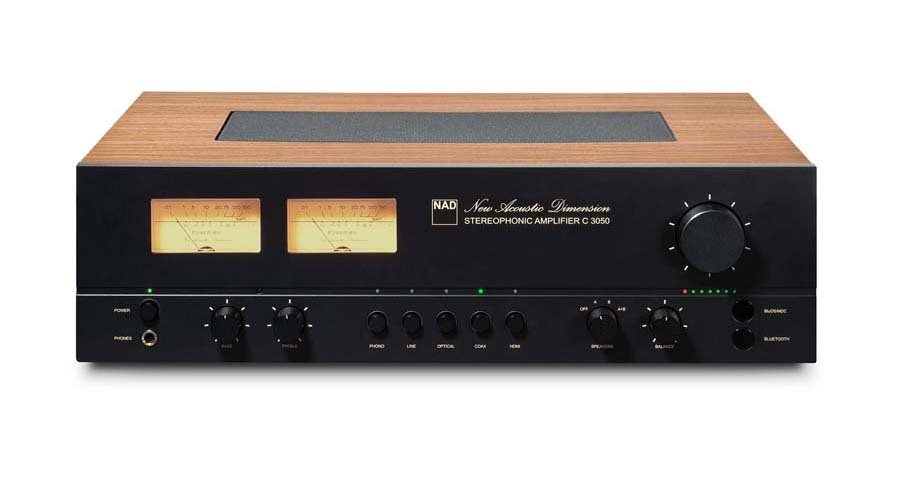
Taking design inspiration from the classic 3030, NAD is at great pains to point out and I think justifiably so, that this is not the old NAD! This is a VERY new NAD – with a heritage echo.
Formed by a bunch of distributors disgruntled at changes in their key vendors’ approach and led in the design by then Managing director and founder Martyn Borish and the engineering skill of Bjorn Erik Edvardsen, NAD set out to deliver to the market not only a better-sounding product but one at a low price point. They went on to produce the NAD 3020 which is still recognised as the world’s best-selling amplifier, as well as introducing a few further innovative and well-received products and marketing approaches, including being among the first to publish “real” power ratings rather than just test bench ones.
BUILD AND DESIGN OF THE NAD C 3050 AMP
The C 3050 is an ever so slightly less fancy version of the limited run 3050 LE (Limited Edition) which each had a numbered back panel and certificate, real walnut casing, and NAD’s modular design circuitry – called MDC2 – with BlueOS module installed as standard.
This MDC2 module brings the much-lauded Blue OS, the increasingly demanded Roon Ready, Airplay, HDMI, Wi-Fi, and ethernet connectivity, plus Bluetooth to the 3050’s standard analogue inputs. This allows for a breadth of streaming and TV hookup options, as well as opening up the ability to run DIRAC room correction. While the 3050 LE is now “unobtanium” the standard C 3050 is readily available from your local dealer and NAD offers the MDC2 module as a paid-for add-on, and that’s the unit I have in for review.
Aesthetics wise the 3050 does look, well… vintage. Unpacking it and removing the soft cloth fascia cover you are looking at what looks like a 1970s amp. A black fascia is resplendent with two VU meters (adjustable for input power or output power) under which sit the power-on push button and a headphone socket. Heading right we first come to rotary tone controls. I pause here as I’m sure already readers are hissing with a sharp intake of breath believing tone controls have no place in modern audiophile equipment, but they are here nonetheless, and some people do put them to use. Personally, I don’t, and they remain in their neutral positions.
Continuing along the face we have a row of quite basic soft push input source buttons for Phono, Line, Optical, Digital Coax, and HDMI. A small green LED indicates which of these is selected. Next, we have a selector for output speakers (A, B, both, or none) and (is that another sharp intake I hear at the back?) a balance control. Again, I left this neutral. Far right we have a large “infinite” rotary volume control with LED indicator and below is an indicator for BlueOS and Bluetooth connections. These LEDs can be dimmed or defeated fully via the BlueOS app. NAD’s logo and 1970s-style cursive name and model number complete the vintage look.
Around the back, we have the digital connections via MDC2 module as well as a USB-A for playing files from an external disc (but no USB B input should you want to use a standalone streamer requiring it) alongside more traditional RCA Phono stage for an MM cartridge and just one other single-ended RCA input. The two sets of speaker binding posts are in blue and red plastic and will take banana plugs or standard bare wire as required. A subwoofer output is also provided, as well as a bridged Pre/Power input/output meaning you can if desired pair with a power amp. For a vintage-styled amp, NAD is clearly expecting most of its users to be digital-minded more than analogue. But then for me, that is exactly what they ARE saying with this amp. A standard IEC power cable socket is on the far right. A very comprehensive plastic remote is also supplied.
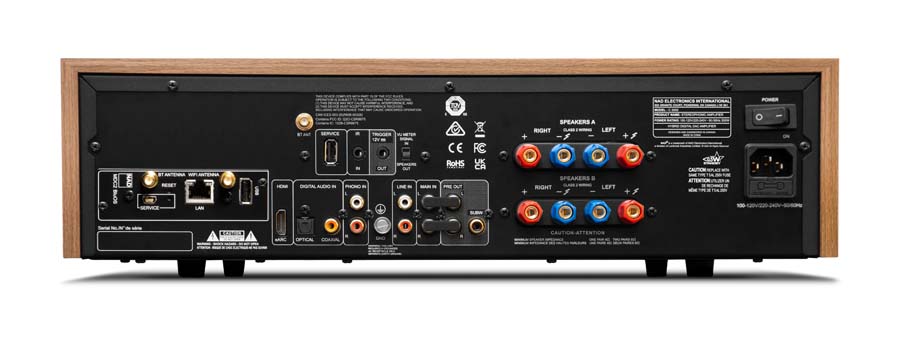
The casework’s most obvious feature is the walnut vinyl wrap, sadly not the real walnut of the LE version but hardly a deal breaker at this price point. A black perforated grille sits in the middle of this giving us a teasing glimpse of what is clearly a modern and digital-heavy interior. NAD are proponents of Hybrid Digital Class D amplification – what they call UcD amplification. Designed, say NAD, to offer vanishingly low distortion, the C3050 employs a custom-made-for-NAD, Hypex-based amplifier module (visible through that grille) that provides a very respectable 100W real-world power into both 4 and 8 ohms. The custom-made amplifier module is complimented further by NAD’s proprietary output filter, which according to NAD controls the amps behaviour as it approaches clipping.
SOUND QUALITY
I was genuinely unsure what to expect from the C 3050, having never run NAD in the past; that 70s styling and Class D implementation is a recipe for zero preconceptions – which can be refreshing when reviewing.
Unpacked and on the rack, I hooked up a Technics 1210 Mk3D to run, I feel, a realistic pairing of an AT VM540ML cart to the integrated phono stage, set up Blue OS (very easy), added it to my Roon devices and tied in Qobuz, connected it to my Blumenhofer Tempesta’s and set off. Over a few weeks, I was able to give all the various playback options a good run.
Given this is a relatively low price point I was immediately pleasantly surprised by the integrated MM phono stage. Running it over a few weeks I found the overall sound to be very good, smooth, not overly present or shouty, and with a very good level of detail and pace. There is plenty of decent bass, not super deep or the last word in textural layering, but very inviting for late nice listening. I was very happy listening to a very broad range of music from jazz, through rock to electronica without the faff of extra phono stages to turn on and extra cable to set up (or pay for!), or additional DAC and streamer boxes to fire up. Turning the volume knob up, with its dimmable LEDs lighting up like a landing strip at night, you get more of the same sonically, with only a slight reluctance above comfortable listening levels. It can feel like the crossover of mid to high sounds a teeny bit set back, almost as if there is a tiny dip in the EQ, but this could be a room-specific issue, so listening in your own setup is recommended. (I had to double check DIRAC was indeed off).
On the streaming front, be it BlueOS or Roon, the C3050 really did a great job whether through my reference Blumenhofer Tempesta’s (a £5K floor stander) or the diminutive “budget” Fyne 300 bookshelf. Never shouty or jarring across all my listening, be it Stevie Ray Vaughn’s “Couldn’t Stand the Weather” or Jean Michel Jarre’s “Arpegiator”, to Prince’s “Sign O’ the Time” and even the Bee Gee’s, I was happily tapping my foot and enjoying myself whether it was simply background or critical listening. While it leans more towards warm than bright, it is resolving, and the imaging and staging dimensionality is not to be sniffed at – often very pleasantly surprising me.
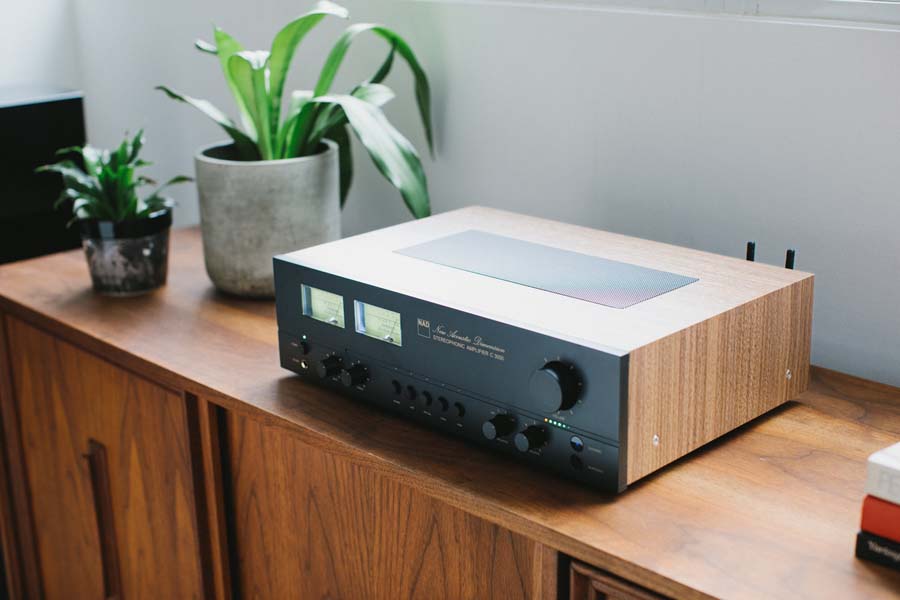
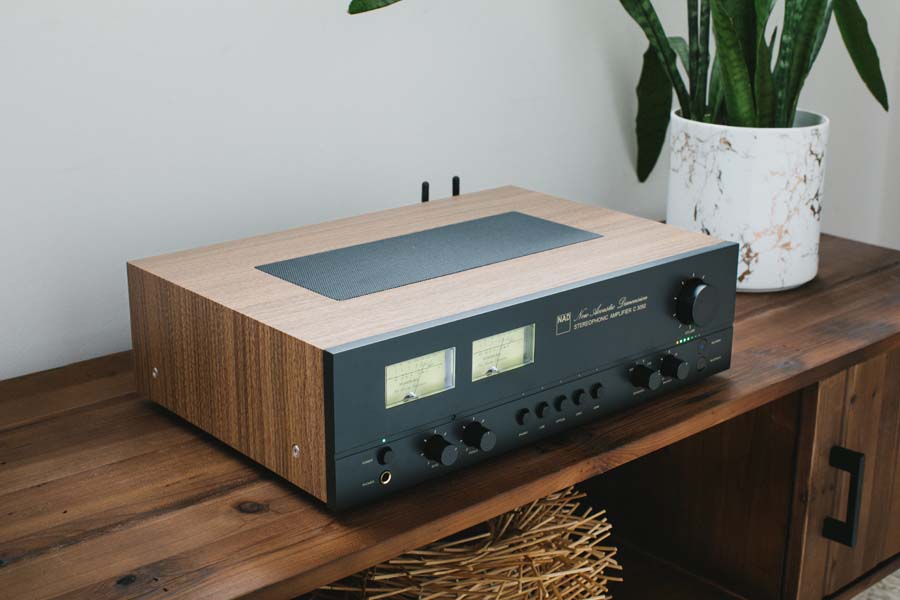
Sure, the C3050 isn’t the last word in harmonic details in the lower bass registers and top-end transparency, but is not lacking for enjoyment at all – and for its price point, it’s a seriously competent amplifier.
Consistently the Bass response is full and pretty meaty only a smidge overstated when pushed and lacking a little heft when side by side with my reference Hegel 390, but, overall I was very impressed.
At heart, I’d say Streaming is the main bag for the 3050. You get the rich choice of the very capable, simple to use, and increasingly popular BlueOS platform, or set the C3050 as a Roon endpoint. BlueOS is a very open platform allowing for a laundry list of streaming services such as Qobuz, Spotify, Deezer, Tidal, or your local library. In addition, there’s integration with multi-room systems such as Control4 and even Alexa (not tested). I played with both BlueOS and Roon and found very little to separate them sonically. You can also leverage Airplay2 or bi-directional aptX HD Bluetooth allowing even streaming to wireless headphones meaning the 3050 really does appeal to a wide market of users who want quality playback on their service of choice, want to hook up a turntable but maybe aren’t yet investing in standalone streamers, DAC’s or phonostages. The inclusion of HDMI with eArc also allows for use in a home cinema-type scenario. The 3050 makes for a very versatile, easy-to-use streamer and a good-sounding one. Surprisingly so – and I know I said that before, but it bears repeating.
The 3050 ships with a basic form of DIRAC room correction and all the necessary, all be it basic, hardware to set it up. It’s limited to 500hz, but the full option is available to buy. As room correction for me varies in users’ experiences, I won’t detail my use of it here as part of the review and instead tested the 3050 without it, but it’s there as a tool for those who want to experiment or require it due to known room issues. While I’m sure experienced DIRAC users find it a doddle, I have to say I found it less intuitive and harder to set up (or even get going until a lengthy tour of various websites) than Lyngdorf’s Room Perfect solution, but this isn’t the point of the review.
The DAC in the C3050 is a TI PCM5242, one of Texas Instruments’ latest designs with a focus on low jitter and with the inclusion of DSP handling. That last bit is important to note – when employing the MDC2 module all the analogue inputs on the C3050 are converted to digital before being finally converted back to analogue and passed to the output stage. In the main, this ADC conversion enables the multi-room/BlueOS functions on all sources, and for me, this shouldn’t be of real concern to many at this level especially with the proliferation of DSP and digital amplification these days, but may have some purists raising an eyebrow or two. Given so much music now is all digital anyway and with a large proportion of modern vinyl having digital in its chain, we really do need to stop getting so worked up about such things. The use of DSP in the chain also means the user can adjust the Bass Crossover frequency as desired. I played around with it but settled on the default.
Comparing with the far pricier Holo Spring 3 DAC running off an Innuos Pulse, the 3050 comes across a tiny bit fatter and softer, lacking some of the scale and bite, but it does have good detail and dynamics for an integrated DAC in its class, and again it really is very enjoyable to listen to, and shouldn’t have you itching to upgrade too soon. Without the MDC2 module, the analogue path is untouched, but you don’t get all that extra digital/BlueOS capability so choosing your option based on your existing setup would be my advice.

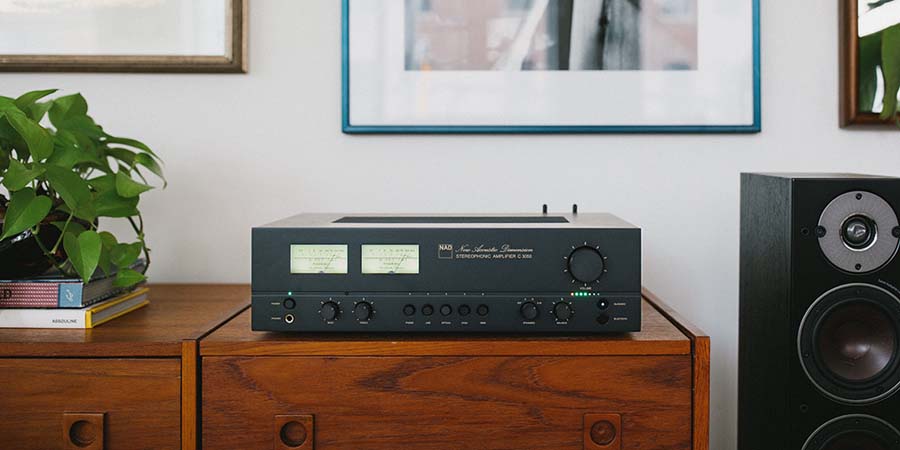
For completeness, I tried both wired and wireless connections and both were perfectly stable throughout testing, I also connected my LG OLED via that very handy eArc connector which worked flawlessly, for example when listening to Pink Floyd’s incredible Pulse Live on Sky Arts. The presentation was wide, had great dimension to it, and grabbed me in a way my simple but decent Sony sound bar and basic subwoofer simply could not, so much that the C 3050 remained in my lounge far longer than my better half would have liked and I’m now thinking about a mini home cinema set up in my new office! The presentation had great realism and the live feel was delivered convincingly with the artists’ stage positioning and dynamics handled very well, with a very slight leaning to smooth and bassy rather than hyper-resolving or bright.
CONCLUSION
This is no 70’s HiFi dinosaur- it surprised me in a very positive way. To offer such a breadth of digital capability, an on-board MM phono stage, as well as being able to handle multi-room or home cinema use cases is impressive in any amp. To do it at a whack under 2 grand with a great sonic capability that I would say outpaced expectations and be as easy and enjoyable to engage with as the C3050 is – well it deserves serious attention. For someone getting to grips with proper HiFi, who wants to spin vinyl and stream, or is looking to add a new improved heart to their existing setup and speakers with this type of budget, then the C3050 is well worth a look.
Aesthetics could be seen as marmite, but for anyone looking for that vintage cachet, this is a winner. I’d suggest pairing with a neutral or forward speaker to avoid compounding warmth and in fact, could be a great way to tame too much brightness or room issues (via Tone control and DIRAC).
AT A GLANCE
Build Quality and Features:
Good looking and with a definite retro vibe
Onboard features allow for a whole range of inputs and listening scenarios from turntables to multi-room
Sound Quality:
Excellent sounding
Errs on the side of a warmer presentation
Value For Money:
At well under £2000, I think this integrated amplifier represents very good value for money
We Loved:
Great overall sonic presentation.
Ease of use, versatility, and wealth of connectivity options across digital options as well as catering for a turntable will be a massive plus point for many
Great smooth and dimensional presentation and full bass
VU meters are always fun. Just a very enjoyable, and easy to relax with, amplifier
We Didn’t Love So Much:
That infinite volume rotary makes me nervous when starting up, the input buttons could be of better quality
DIRAC is tricky to configure well (if desired)
Elevator Pitch Review: The NAD C 3050 with MDC2 module offers the vintage NAD aesthetics with a real modern heart. With extensive digital streaming options via BlueOS, Roon, or Bluetooth and analogue inputs including an integrated MM phono stage. Whether it’s 2-channel listening or integration into a multi-room, or home cinema, solution the NAD C3050 is a great to listen-to, versatile, multifunction, and impressively performing amplifier at an incredibly attractive ticket price. If you haven’t heard NAD, or haven’t heard them in a while, this is a sign to do so now!
Alan McIntosh
Price: NAD 3050 + MDC2 BlueOS module bundle – £1650 approx. in UK
Main published Specification
Continuous output power into 8 ohms and 4 ohms 100W (ref. 20 Hz-20 kHz at rated THD, both channels driven)
THD (20 Hz – 20 kHz) <0.03% (250 mW to 100 W, 8 ohms and 4 ohms)
Signal-to-Noise Ratio>95dB (A-weighted, 500 mV input, ref. 1 W out in 8 ohms)
Analogue Input: 1 x MM Phono Stage, 1 x RCA
Digital input (Via MDC2 Module): Coaxial Digital, Optical, HDMI eArc, Gigabit Ethernet/Wifi, Bluetooth (Bidirectional aptX HD), USB A (for stored files)
Supported file format MP3, AAC, WMA, OGG, WMA-L, ALAC, OPUS, MQA, WAV, AIFFS – BlueOS and Roon ready.
Output: A, B, A+B, None (Speakers). Subwoofer, Pre out
Sampling rate: up to 192 kHz/24 bit
Network connectivity: Gigabit Ethernet RJ45Wi-Fi 5
Dimensions: 450x110x335mm, 10kg
Test setup
Blumenhofer Acoustic Tempesta 17 and Fyne Audio 300 speakers. Technics SL120 Mk3D, AT VM540ML, Innuos Pulse, Holo Spring 3 Level 2 DAC, Audioquest Yukon RCA cabling, Hegel 390 Amplifier/DAC (for comparison), Tellurium Q Black II Speaker cable. Room (3.4x4m) treatment from GIK acoustics, Racking by Quadraspire. Gold Note PH10/PSU10 Phono stage (for comparison).
















































